Fishing has helped me at so many pivotal points in my life from a teenager to a father. It’s the drive that keeps me sane and focused. To help me take care of myself so I can take care of my family and others. The vast array of resources available is pretty incredible, so I ask that you take advantage of those 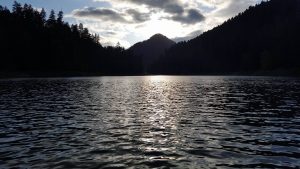 opportunities to fish and take someone fishing. The inspiration behind this article is to help veterans find ways to cope and deal with stressors, but in actuality anyone can use this in life to help them stay on track.
opportunities to fish and take someone fishing. The inspiration behind this article is to help veterans find ways to cope and deal with stressors, but in actuality anyone can use this in life to help them stay on track.
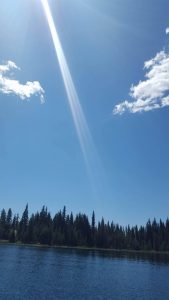 Since that point I’ve used fishing a motivation to help me keep things in-line so that I can always do my job and take care of my family, without it, I would be struggling. Even this very website is helping me ensure I continue to fish.
Since that point I’ve used fishing a motivation to help me keep things in-line so that I can always do my job and take care of my family, without it, I would be struggling. Even this very website is helping me ensure I continue to fish.
Just a few weeks ago I met Justin, a Marine Corp veteran who served two combat tours in Afghanistan and reached out to me for some fishing information. Over the next several days, I really got to know Justin and his stories, from his time in the Marine Corp to fishing. Let me tell you, this guy is an inspiration and the reason behind how this whole article came to. Being Active Duty myself, I completely understand the struggles of working yourself back into a life you had before. I’ve never personally had to live this, but I’ve helped a few people over the past few years.
As I’ve gotten to know Justin and his amazing story, and it truly is amazing! Struggles while deployed, dealing with physical and mental rebuilding, dealing with the VA…. Justin found himself at a point in his life where he needed a change. Instead of going down the wrong path, he fought back as you would expect any Marine to do. Reeling from the effects of combat, Justin has found “FISHING”. Fishing has brought solace to his world and helped him focus and decompress from daily life and the effects of combat.
Fishing is helping him take care of himself, and in turn helps him be an even better father, husband, and friend. One of the things intrigued me was our discussion of his cheat sheets on fishing. Combat effects may have an effect on his memory. However, the problem solving that was instilled in a young Marine in years past can never be taken. He has learned to adapt to his new world and make things easier. YES, FISHING has helped him use what he already know to develop new tools to adapt.
Many people may not realize this, but through fishing, Justin has developed new skills for his current situation. Something no doctor, therapist, or medication could ever do. Justin has persevered and coped to help himself heal, and he did this with fishing.
Just recently, I had a great talk with Justin and he shared some pictures from his recent weekend camping and fishing. Now, Justin really keeps things simple with camping and fishing and nothing fancy. An amazing Oregon backdrop of snow-capped mountains, stunningly clear lakes, this is truly how an American Veteran takes care of himself. An inflatable pontoon boat, couple rods and the fish he catches, Justin has chosen a new path. Again, it keeps him focused taking care of himself and ultimately his family! His saying when we talk is “the tug [the fish] is the drug.” It is that tug that keeps us going back to the water. 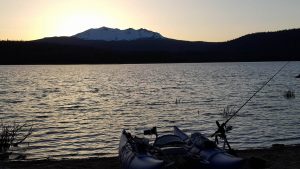
I’m truly thankful for Justin reaching out to me and asking a simple question, which has inspired this. I want to make sure I can reach anyone who may need some help and let them know, they could find what they are looking for in fishing. I’ve put together a resource list of fishing opportunities for veterans to utilize. Maybe this info can reach someone else and inspire them to follow the same path that Justin has and utilize fishing for a new purpose.
In reality, this information goes for everyone, fishing is definitely a way to help with the stressors of life. If you have haven’t served in the military its ok, do you know someone who did; a family member, friend, neighbor, or a co-worker? I hope that maybe this will inspire you to reach out and help someone you know and introduce them to fishing or just get them back involved in the sport.
If you or someone you may know, has a story like Justin’s or another way fishing has helped coped with stressors I would be honored to hear from you! I want to hear your story just like Justin’s! If you would like to share your story below and maybe it will inspire others. Maybe a private conversation is in order, all my contact information can be found below. I challenge you to share this with your friends, family and most importantly a veteran you may know.
I’ve also created a new Facebook group geared towards helping veterans find outdoor resources and link up with others. You don’t have to be a veteran to join, just have the desire to help with fishing information. The Facebook group is called The National Angler to help people connect!
Semper Fish!
Joe – The National Angler
thenationalangler@gmail.com or on Facebook @thenationalangler
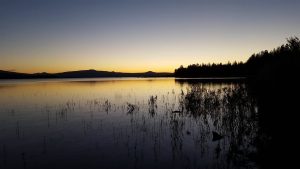
All photos are courtesy of Justin
==========================================================================================================
GIVEAWAY INSTRUCTIONS!
FOR A CHANCE TO WIN THE LURES AND LINE PICTURE BELOW “LIKE” THE NATIONAL ANGLER FACEBOOK PAGE, THAT’S IT!
ALSO
!!SHARING THE Fishing for A Cause – Veteran Fishing Opportunities ARTICLE WILL GIVE YOU TWO CHANCES AT THE GIVEAWAY!!
DRAWING WILL BE HELD ON SUNDAY JUNE 26TH 2016 – I WILL SHIP THE FOLLOWING DAY TO THE WINNER – GOOD LUCK!
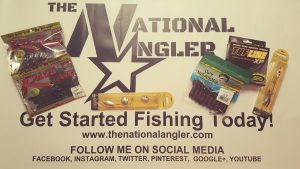
Included are Strike King Rage Tail Shad and Worm – My current personal favorite soft plastic!
Booyah Boo Rig – For those who can’t use the Alabama Rig
Booyah Tandem Rig – Great for working in front of a swim bait for and added flash
Yamamoto Ika – This is my finesse hidden gem, love these things
TUF-LINE XP – Best “ROUND” braid money can buy
==========================================================================================================
Here is a list of resources that you can take advantage of. If you are not a veteran, you can always help out one of these great organizations. If you can’t locate one in your area let me know, or maybe an option to get something going.
Veteran Fishing Organization – This is just a list of organization that I have found with the help of my friend GOOGLE. There is no endorsement for these organizations, just wanted to start a list to help others out. If you find one that is missing, please let me know so I can get this list updated.
Joe
Project Healing Waters
https://www.projecthealingwaters.org/
Project Healing Waters Fly Fishing, Inc.™ is dedicated to the physical and emotional rehabilitation of disabled active military service personnel and disabled veterans through fly fishing and associated activities including education and outings.
The Wounded Veterans Fishing Program – Washington State Only
http://woundedvetsfishing.org/
Our goal is to provide an alternate means of therapy for our wounded returning from combat with Post Traumatic Stress Disorder (PTSD) Traumatic Brain Injury (TBI), and Physical Disabilities. Give them a stress-free, nonmedical environment to interact with others returning from combat and those with previous combat experiences to increase their moral. Finally to provide them with a tool to reutilize in the future should relapse occur.
The wounded Veterans Fishing Program was created in the beginning of 2009 by VFW Post 318 of Olympia, Washington. Originally the concept was done by
Danny Gabriel with a few of his fishing friends who felt the need to help American wounded.
Fishing is the most relaxing sport and is a very good way to build a person’s confidence and morale.
Take A Soldier Fishing – Oregon ONLY
http://www.takeasoldierfishing.org/index.html
| We assist communities at large, by offering them the ability to show their support for the troops by sponsoring our Take A Soldier Fishing program. This allows service members to see just how much they are appreciated. For those that serve to support our fishing program, it gives the individual the ability to see how their support makes a profound difference in a service member or veteran’s life by providing a safe and positive outdoor experience.
We strive to show that there are people out there that care, and want to help. By providing these events, we have found they give the soldiers something to look forward to. We have also found that soldiers have also changed their outlook on life – the way they feel about wearing their uniform and a new sense of hope. |
Heros On The Water (HOW)
http://heroesonthewater.org/
To help warriors relax, rehabilitate and reintegrate through kayak fishing and the outdoors.
Let’s Go Fishing
http://lgfws.com/
Veterans of all ages, from young men and women who have recently returned from overseas conflicts to those in our greatest generation, deserve our support, appreciation and help. Sometimes the best help we can give is to offer a moment’s peace or a chance to share a laugh or a memory with others. Let’s Go Fishing offers veterans the opportunity to put aside thoughts of service if they wish and experience being the recipient of service from all of us.
Banded Brigade Outdoors
http://www.bandedbrigadeoutdoors.org/
A non-profit organization raising money to enable us to take wounded or disabled American veterans, active duty military personnel and their families on hunts and fishing trips around the country
Lone Star Warrior Outdoors
http://www.lonestarwarriorsoutdoors.com/
Lone Star Warriors Outdoors (LSWO) was founded by Retired Army and Combat Veteran Chris Gill. Chris has hunted, fished and worked with non-profit organizations offering these outdoor adventures for Wounded Warriors for years. In 2011 we created a program focused on hunting and fishing trying to say thank you to every Wounded Warrior out there. As of 2012 the combined number of combat wounded warriors from Operation Enduring Freedom (OEF), Operation Iraqi Freedom (OIF), and Operation New Dawn (OND) was over 50,000. This means that there are many Wounded Warriors that have hunted or fished in the past or that have always wanted to hunt or fish and this is their opportunity. It is our goal to get those warriors back out doing what they love and allowing them the time with other combat vets to talk and feel a part of something again, which is why we created Lone Star Warriors Outdoors.
Montana Wounded Warriors
http://montanawoundedwarriors.org/
Montana Wounded Warriors was formed to provide residents of the State of Montana, who were wounded as a result of combat service in the Iraq and Afghanistan wars, with high-quality hunting and fishing opportunities in the state of Montana. These veterans must also have received at least a 30% disability rating from the VA. We are based in Columbia Falls, Montana, near Glacier National Park.
Patriot Hunts – North Carolina
www.patriothunts.org
Patriot Hunts is dedicated to providing outdoor experiences for our Wounded Warriors, and Gold Star children of fallen heroes. With all of us sportsman and Patriots working together, we truly can make a difference in the life of a soldier who has chosen to lay his life at the altar of freedom on our behalf. These men and women have not only paid a physical and mental price, some have paid the ultimate price, for their fellow man. The cost of freedom is not measured in dollars, and it is paid for by patriots in our armed forces, by their courage, their commitment, and their willingness to stand in harms way for this country.
Patriots and Heros Outdoors – Texas
http://www.patriotsandheroesoutdoors.com/
The primary mission of Patriots and Heroes Outdoors is providing outdoor activities for Purple Heart recipients and military with service-related injuries to show our appreciation of their sacrifice. Our mission reflects the changing needs of service families and offers a therapeutic break from daily routine for our warriors and their loved ones.
Team River Runner
http://www.teamriverrunner.org/
Team River Runner envisions a national network which creates innovative paddling programs designed to assist with the recovery of those injured while serving our country. Through paddle sports, TRR volunteers and partners provide local communities unique opportunities for the active, safe and positive support of healing service members and their families.
Wounded Warriors In Action (WWIA) – Florida
https://www.wwiaf.org/
Established in 2007, the Wounded Warriors in Action Foundation (WWIA) is a national 501(c)(3) non-profit organization headquartered in Apollo Beach Florida. The WWIA is dedicated to serving our nation’s combat wounded, Purple Heart recipients, by providing world-class outdoor sporting activities.
Wounded Warrior Outdoors
http://www.woundedwarrioroutdoors.com/
Wounded Warrior Outdoors, Inc. is a non-profit organization exclusively founded to provide wounded servicemen and women with therapeutic outdoor adventures across North America. WWO gives deserving Active Duty Warriors in transition the opportunity of a lifetime in the wilderness location of their choice. We call them “Adventures Enabled.” Their adventure could take them bear hunting in the mountains of British Columbia, Canada, on alligator hunts or fishing excursions in the Gulf Coast region of Florida or deer hunting in Texas. During their experience, they will participate in therapeutic activities such as backpacking, trail expeditions and numerous social interactions.
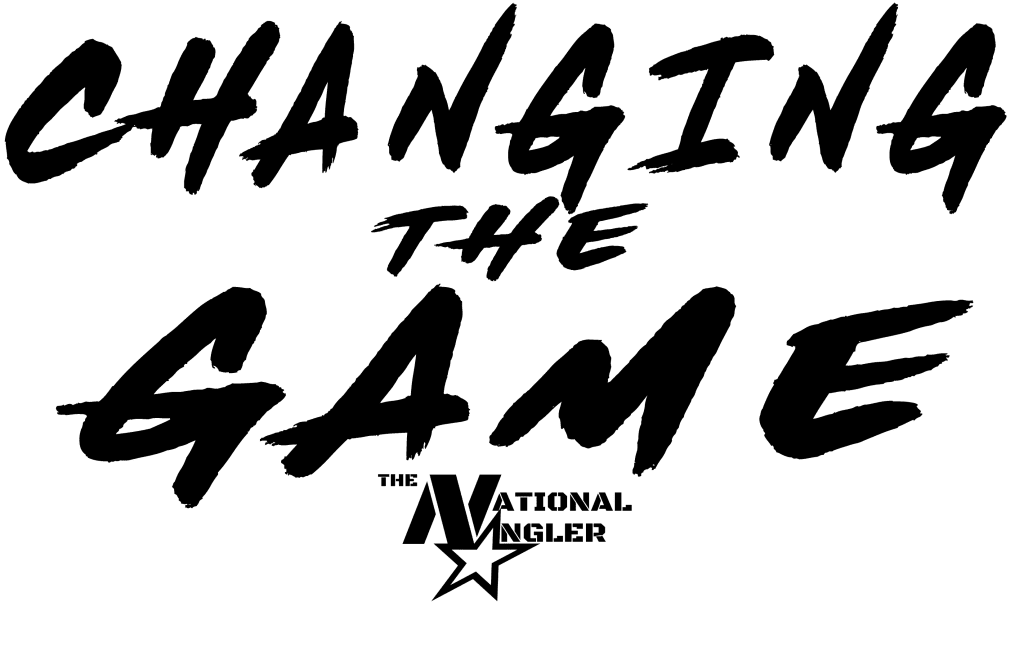
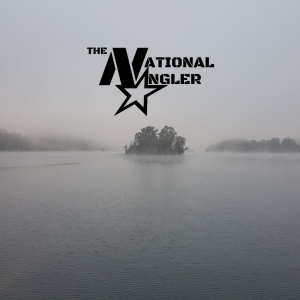
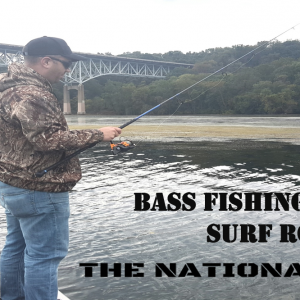
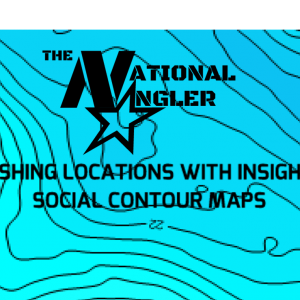
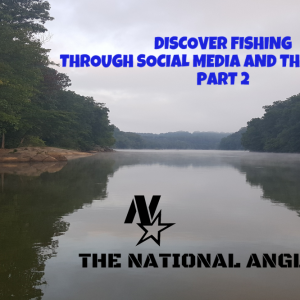
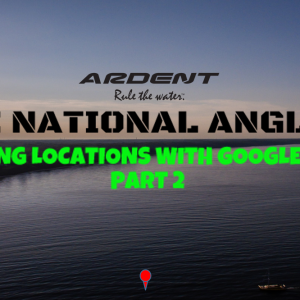
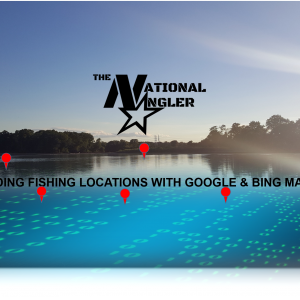
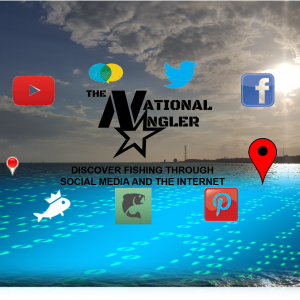
 id I know, Burt and I would have quit the adventures that summer. Once out on the water, I quickly realized (me being new to the area) we had no clue how to fish the Chesapeake Bay with light tackle. Through the summ
id I know, Burt and I would have quit the adventures that summer. Once out on the water, I quickly realized (me being new to the area) we had no clue how to fish the Chesapeake Bay with light tackle. Through the summ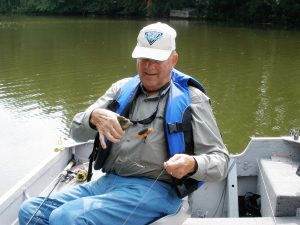 er we developed a relationship that will never be forgotten. If I had the information back then that I can find on social media and on the internet today we would have saved so much time and probably been more successful. I was fortunate to have my first summer in Mar
er we developed a relationship that will never be forgotten. If I had the information back then that I can find on social media and on the internet today we would have saved so much time and probably been more successful. I was fortunate to have my first summer in Mar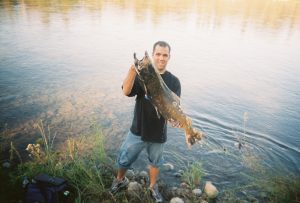 in the next few weeks. Two weeks later Pete called and gave me a location near Sacramento and what fishing tackle to bring. I showed up that Saturday morning to catch my first Salmon, along with a limit and personal best!
in the next few weeks. Two weeks later Pete called and gave me a location near Sacramento and what fishing tackle to bring. I showed up that Saturday morning to catch my first Salmon, along with a limit and personal best!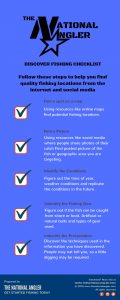 you find on the various maps. Just like I discussed, once you find a spot, then you had to figure out if the spot was productive or not and how to fish it. Today you can find the spot and use social media to discover if the spot is worthwhile. Information from the internet and social media will also help with the time of year, day, weather, tides, and techniques to help you catch more fish and have more time available to fish.
you find on the various maps. Just like I discussed, once you find a spot, then you had to figure out if the spot was productive or not and how to fish it. Today you can find the spot and use social media to discover if the spot is worthwhile. Information from the internet and social media will also help with the time of year, day, weather, tides, and techniques to help you catch more fish and have more time available to fish.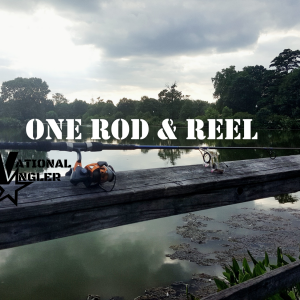
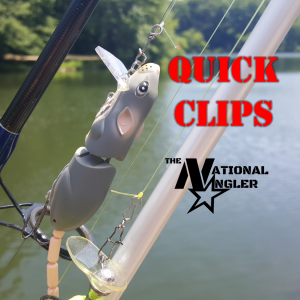
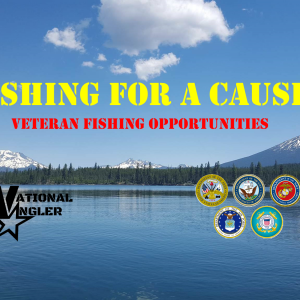
 opportunities to fish and take someone fishing. The inspiration behind this article is to help veterans find ways to cope and deal with stressors, but in actuality anyone can use this in life to help them stay on track.
opportunities to fish and take someone fishing. The inspiration behind this article is to help veterans find ways to cope and deal with stressors, but in actuality anyone can use this in life to help them stay on track. Since that point I’ve used fishing a motivation to help me keep things in-line so that I can always do my job and take care of my family, without it, I would be struggling. Even this very website is helping me ensure I continue to fish.
Since that point I’ve used fishing a motivation to help me keep things in-line so that I can always do my job and take care of my family, without it, I would be struggling. Even this very website is helping me ensure I continue to fish. 


